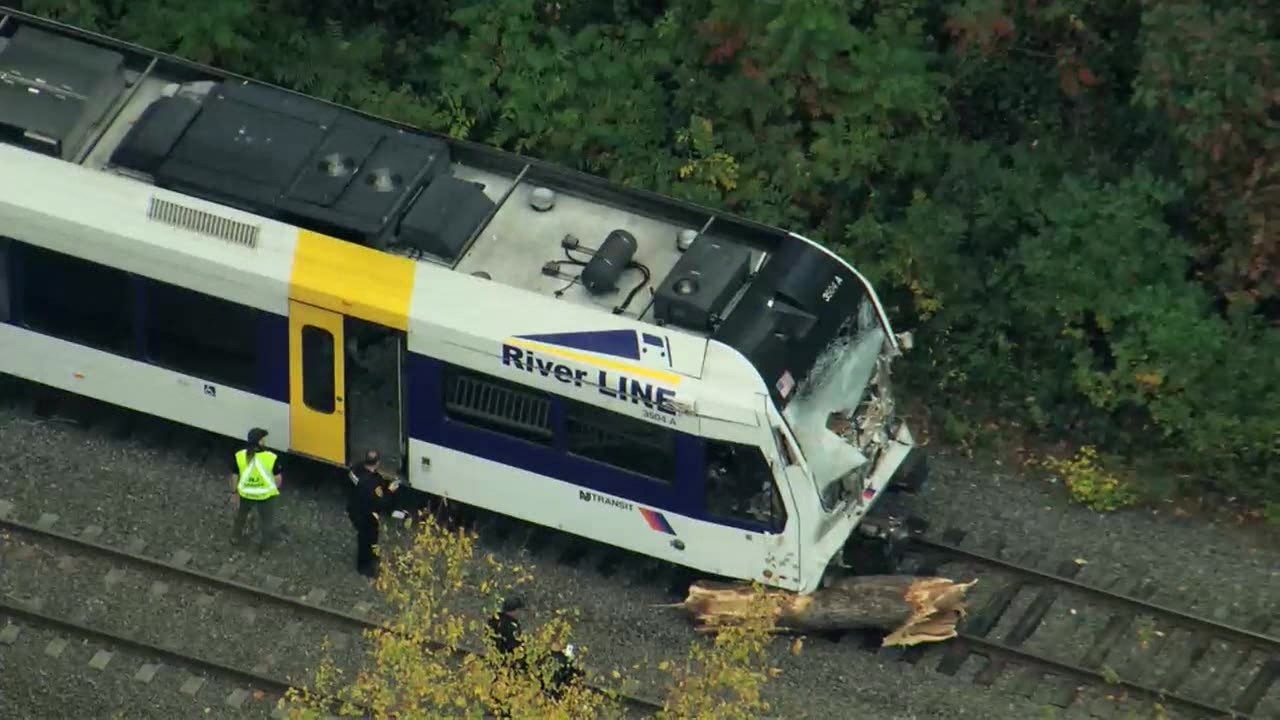The tragic death of a New Jersey Transit train operator and injuries to numerous passengers following a collision with a fallen tree underscore the inherent risks faced by rail transit employees and passengers. This incident, which occurred on Monday morning near the Roebling station on the River Line, highlights the critical need for improved safety measures and infrastructure maintenance to mitigate such unforeseen circumstances. The investigation into the cause of the tree falling onto the tracks will be vital in preventing similar tragedies in the future. The impact extends beyond the immediate victims, affecting the broader community reliant on the River Line for transportation and underscoring the importance of robust safety protocols within the rail system. This necessitates a detailed examination of the incident to identify areas for improvement and enhance passenger and operator safety.
The Fatal Accident and its Immediate Aftermath
The collision, which took place around 6 a.m. on Monday morning, resulted in the immediate death of the train operator. The impact was severe enough to cause injuries to at least 19 passengers, requiring their transport to alternative locations. The initial response involved emergency services attending to the injured and securing the accident site. A swift announcement was made via social media by New Jersey Transit, alerting commuters of the service disruption and subsequent bus service provided as an alternative. This prompt response, though crucial in handling immediate needs, points to the necessity for more proactive preventative measures to avoid similar accidents.
Initial Response and Communication
New Jersey Transit’s immediate response to the incident involved the deployment of police, paramedics, and transit officials to secure the accident site and care for those affected. The subsequent announcement via social media platforms enabled immediate public awareness. This showcased a proactive and transparent communication strategy, a significant aspect of crisis management during such events. However, future responses may benefit from earlier and potentially broader warnings and updated notifications, particularly those using alternative modes of communication.
The Impact on Passengers and Commuters
Beyond the immediate physical injuries suffered by the passengers, the incident created significant disruption to their travel plans. The suspension of service along a critical transportation route meant considerable inconvenience for many commuters. The need for alternate transportation options highlighted vulnerabilities within the transit system, and the experience underscores the critical role reliable transit service plays in daily life. Many commuters who rely on River Line services faced delays, alternative travel arrangements, and potential work disruptions.
Investigating the Cause of the Accident: The Search for Answers
The investigation into the cause of the accident will be paramount in determining accountability and preventing future incidents. Initial reports indicate a fallen tree caused the derailment, however, questions remain about the circumstances that led to the tree’s collapse. Was it due to natural causes such as wind or storm damage, or could preventative measures have been taken to minimize risk?
The Role of Infrastructure Maintenance
The investigation must consider the condition of the trees along the River Line tracks. Regular maintenance, pruning, and inspection of vegetation bordering the tracks can significantly minimize the risk of falling trees obstructing the rail line. Assessing the frequency and thoroughness of previous inspections will be crucial. The potential need for enhanced tree management practices will undoubtedly become a point of focus for transportation agencies to maintain safe railway operations.
Exploring Environmental Factors and Predictive Measures
Beyond simply the existence of trees near the track, it’s crucial to consider environmental factors which may have influenced the fallen tree’s stability. Factors such as soil conditions, recent weather patterns, and the age of the tree all become crucial elements of the investigation. Identifying any weaknesses in infrastructure that allowed the accident to occur will be central to ensuring railway safety moving forward. This investigation might need to explore proactive measures, such as technological advances to better anticipate weather-related events and tree instability.
Implications for Rail Safety and Future Prevention
The accident provides a stark reminder of the vulnerabilities inherent in rail transit systems. It emphasizes the need for comprehensive safety protocols, thorough infrastructure maintenance, and preparedness strategies for handling emergency situations. The incident also raises concerns over potential weaknesses in the existing systems designed to identify and address risks.
Enhancing Safety Protocols and Training
The accident’s impact extends beyond merely improving infrastructure. Safety protocols for train operators, especially during challenging weather conditions or situations involving unexpected obstacles, need review. Employee training needs a reassessment, with a focus on risk mitigation and emergency response strategies. Incorporating more stringent measures might involve improving real-time communication between operators and control centers. Such improvements would improve timely response capabilities.
Implementing Advanced Technologies and Predictive Maintenance
The future of railway safety may hinge on increased reliance on advanced technologies. Incorporating sophisticated monitoring systems can provide early warnings of potential hazards. Implementing predictive maintenance, based on real-time data from sensors and monitoring equipment, could provide greater anticipation for infrastructure problems. Investment in these technological solutions will play a critical role in creating a safer railway environment.
Takeaways:
- The tragic incident underscores the critical need for continuous improvements in rail safety measures and infrastructure maintenance.
- A thorough investigation is crucial to ascertain the precise causes and identify potential vulnerabilities within the existing safety systems.
- The incident necessitates a comprehensive review of safety protocols, including the training of rail operators in emergency response strategies.
- Integrating advanced technologies, such as predictive maintenance and real-time hazard detection systems, will help build more resilient and safe rail networks in the future.
- Enhanced communication protocols between transit agencies and the public during emergencies must also be evaluated.




